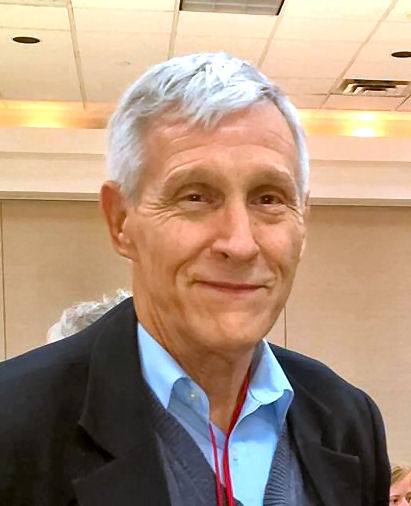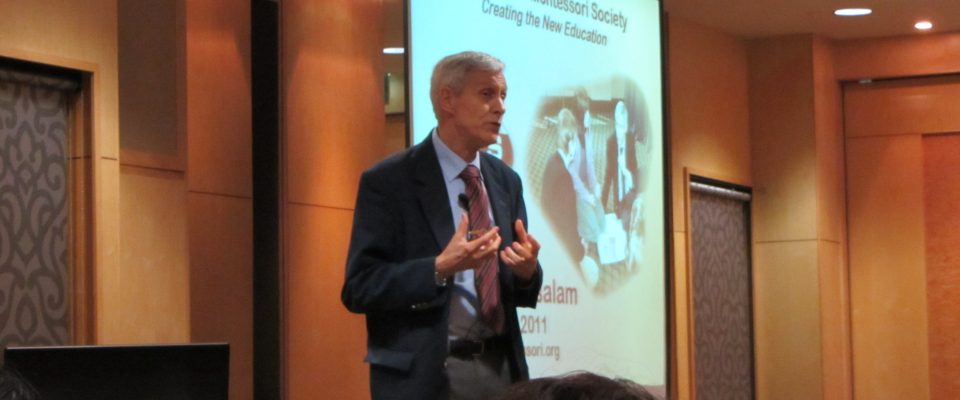International Montessori Society

In 1979, I established the International Montessori Society (IMS) to develop and communicate insights and discoveries I made from my observations of children and adults in the field of Montessori teaching. Before that time, my first interest in education arose from my experience as a Peace Corps volunteer, serving as an assistant professor in the field of engineering at the University of Panama (Panama City, Panama). Following that experience, I started Montessori teaching with young children in the United States in 1969.
Beginning as a classroom teacher in 1969, my efforts at Montessori teaching with young children eventually led to training Montessori teachers in the 1970’s. In that role, in 1979, while observing a teacher interacting with a child, I experienced a sudden moment of unexpected clarity and insight – a complete knowing how Montessori teaching functions to bring about the child’s true nature, just as Dr. Montessori discovered and described in her original experiment observing children in 1907. This was a breakthrough discovery because, before 1979, Montessori teaching was known generally as an academic curriculum involving various self-teaching learning materials or, at most, as a vague, uncertain, and incomplete attempt to duplicate Dr. Montessori’s original 1907 experiment of observing children to bring about their good behavior and obedience.
In my discovery of 1979, I understood that Montessori teaching is actually a process of controlling the environment, not the child, where the “child” is an unknown spiritual being, and the “environment” is everything around that child, consisting of physical objects, other children, and the adult personality. Controlling the environment here means to remove whatever is detrimental in these three elements until the child’s true nature emerges entirely of its own spontaneous accord. So, for example, if a child is abusing some physical object, you control its detrimental influence, such as by distracting his attention away from that abuse, towards some positive attention or activity elsewhere in the environment.
When I found I could communicate this insightful knowledge to others, I started the International Montessori Society (IMS) to support the practical use of this knowledge on a global basis, which I referred to as creating the new education. Beginning with great hope and energy, I soon discovered that while people could initially perceive the basic idea of this “new” Montessori teaching, they couldn’t retain and practice it for long on their own due to many obstacles in their personality, which were often confused and reinforced by their surrounding culture. Sadly, prominent educators and organizations in the Montessori community rejected and opposed this distinctive knowledge in the field for reasons I couldn’t understand at the time. So, I was left to pursue this work of creating this “new education” on my own through various types of outreach for teacher education.
In 1986, I began offering a series of two-day workshops called “Creating the New Education”, to help practitioners answer their many objections and practical questions about applying the IMS type of Montessori teaching with children. In time, I realized that my understanding of Montessori teaching was fundamentally different from the conventional types that were essentially bound by “personality” or “culture.” Since the IMS approach brought about the child’s true nature, I referred to it as “true natural” Montessori teaching. The key difference here is that “true natural” Montessori teaching is committed to following laws of nature, whereas conventional types follow instead the control of personality or culture.
Over the years, through many workshops, I gradually devised various practical rules and guidelines to help practitioners follow ‘true natural’ Montessori teaching. In this way, in 2003, I suddenly realized that I had consolidated a complete practical body of knowledge, consisting of 10 techniques, 20 protocols, three lesson presentations, and a series of safe words. Referring to this knowledge as the “technology of Montessori teaching”, I then began refining this knowledge and focusing all my effort and attention to making this breakthrough technology available to anyone interested in the general public.
With the technology, the whole process of “true natural” Montessori teaching now becomes objective and scientific so that anyone can follow it in a sure and certain manner. IMS offers the technology in summary form at this website: https://imsmontessori.org It is also offered in concentrated form through a two-day IMS workshop training and in the Danbury audio cd and study guide. In addition, IMS provides a formalized teacher education course that incorporates the technology through distance learning on an individualized, personal basis.

June, 2016
Lee Havis, executive director
International Montessori Society
havis@imsmontessori.org

